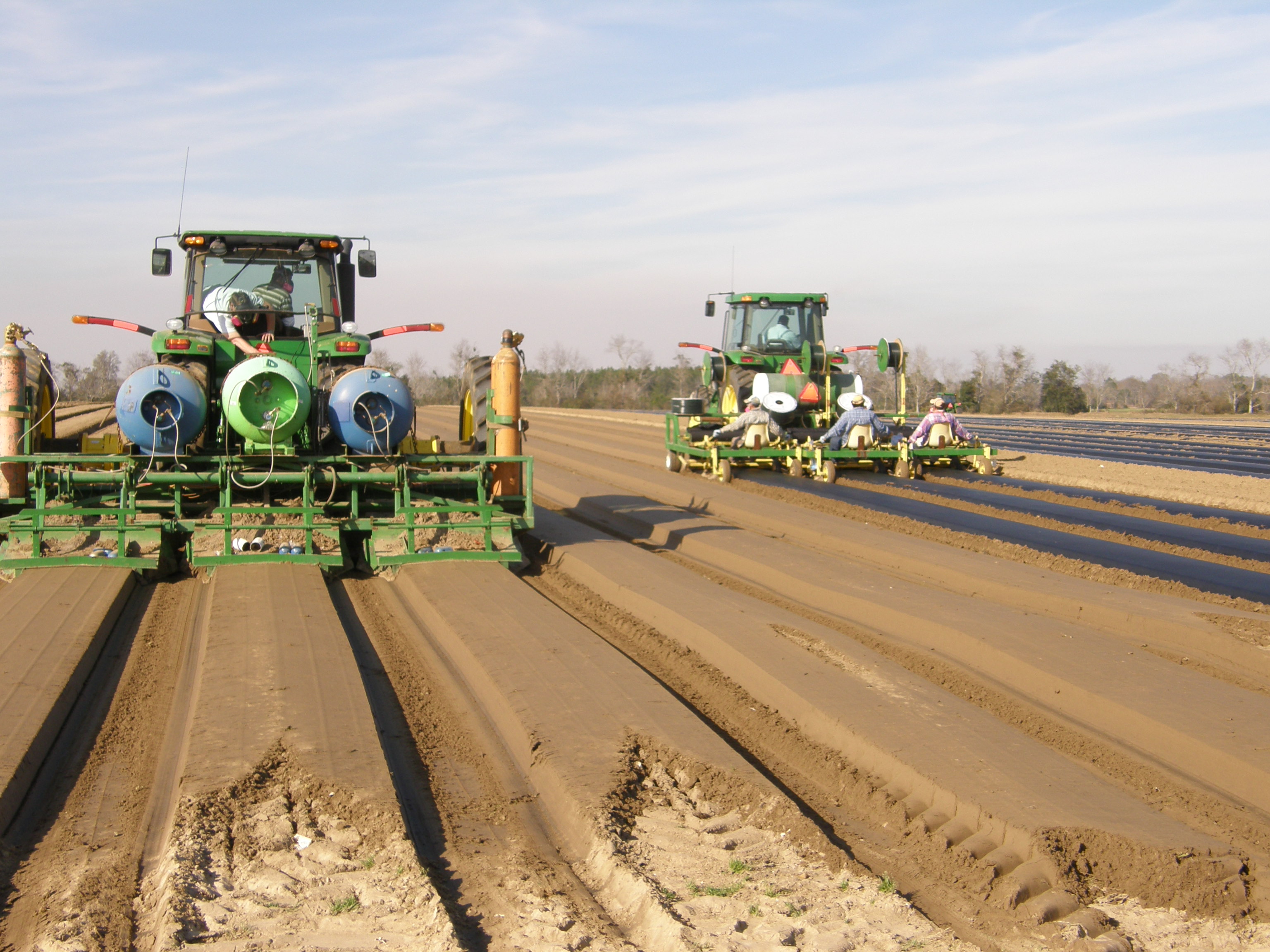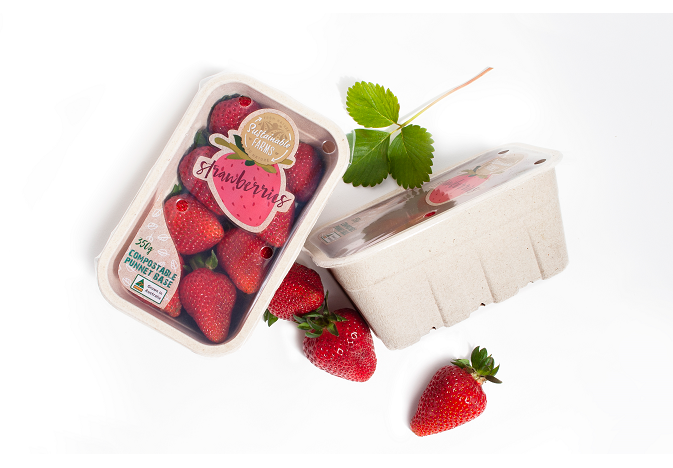New technology in strawberry production

The content of this article 'New technology in strawberry production' was prepared by Hort Innovation and has been revised and republished by FreshFruitPortal.com.
A wide range of technologies has emerged in horticultural industries in recent years.
These technologies can improve strawberry production by reducing inputs and increasing efficiency in a range of on and off-farm tasks.
A number of these technological advancements have had direct impact on strawberry production, with a sample of these technologies, including those related to breeding, production, labor savings/people, and markets.
These recent developments have helped address a number of issues facing the industry, especially to do with changing consumer habits, the shelf life of produce, labor availability and affordability and a range of agronomic practices.
Breeding
Some major advances in the strawberry industry have come from the development of a wide range of new varieties.
Varieties have been developed that not only focus on increasing consumer demand through fruit characteristics that are more robust, attractive and flavourful; but also varieties that are increasingly more disease-resistant, reducing reliance on chemical inputs.
A notable recent global development has been the collaboration between Israeli start-up, NRGene and Japanese car manufacturer, Toyota, which resulted in the decoding of a leading commercial strawberry variety in Japan.
Toyota has been involved in developing various crop varieties over the years, partnered with NRGene to increase breeding efficiency and develop more productive strawberry varieties for the Japanese market.
It’s hoped this research will help advance not only Japan’s strawberry industry but also the world’s.
In Australia, the Queensland Department of Agriculture and Fisheries (QDAF) Strawberry Breeding Program, has been established to create a more profitable strawberry industry through:
- Delivery of new varieties with more efficient production of robust, attractive, flavourful fruit;
- Meeting changing market and environmental demands; and
- Targeting temperate, subtropical and Mediterranean production areas and needs.
The program is funded by Hort Innovation through the strawberry research and development levy and contributions from the Australian Government and QDAF.
The program has released a number of varieties to date, including ‘Suncoast Delight’, ‘Red Rhapsody’, ‘Sundrench’, and ‘Parisienne Kiss’.
All have different attributes which aim to benefit not only the grower but also the end consumer.
Production
There has been a gradual shift within the industry over recent years from conventional strawberry production in-ground, to growing in substrate under controlled environments.
This shift is becoming increasingly more popular due to the potential of controlled environments to reduce the impact of soil-borne diseases, as well as provide protection from weather, pests, weeds and various other diseases.
With increasingly limited access to effective soil fumigants, agricultural companies have been developing alternatives to control soil-borne pest and diseases.
An example is Ethanedinitrile (EDNTM FUMIGAS), a broad-spectrum soil fumigant promoted as a replacement to methyl bromide.
Ongoing research is investigating the use of combinations of new and currently available fumigants to increase the effectiveness in disease control.
Another development in soil fumigation practice is the use of Totally Impermeable Film (TIF).
TIF increases the retention of fumigants within the soil profile, increasing their efficacy, reducing the concentration needed and reducing fumigant loss into the atmosphere.
Other fumigant practices available include steam disinfestation, microwave disinfestation and biofumigant cover crops.
Another example of advancements in production has been the adoption of pulse irrigation, which can be used for both in-ground and substrate production.
Due to the low water holding capacity of substrates, pulse irrigation is commonly used to irrigate crops as required.
Pulse irrigation systems give several short bursts of water to satisfy the needs of the crops, resulting in more efficient use of water and optimizing plant growth.

Labor savings
Increasing costs and staff availability make labor one of the largest overheads in strawberry production and the single biggest challenge for businesses to deal with.
Labor pressures have resulted in increasing interest and demand for automated technologies to aid with harvest.
Companies like AGROBOT, Harvest CROO and Octinion are developing a range of automated robotic systems for the strawberry industry that work either autonomously or semi-autonomously to pick fruit in both field and tabletop production.
The controlled production environment under protected cropping and tabletops is leading the way with advancements in the automated picking space.
Octinion’s Rubion robot is an advanced example of a system near the commercialization stage, offering significant advancements in the picking hand for even pressure distribution of ripe fruit.
Meanwhile, the challenges with in-field harvesting are being explored with examples such as AGROBOT’s E-Series, a fully autonomous robotic harvester for both conventional in-ground and tabletop production.
The autonomous robot, which has the ability to harvest two conventional rows and four tabletop rows of strawberries, moves through the growing area picking the desirable fruit by analyzing for ripeness, shape and size.
Unlike other robotic harvesters, the E-Series picks the fruit by cutting above the calyx to prevent fruit damage.
Once the fruit is picked it is then transferred, with one of its 24 robotic arms, to trays which are located in the center of the machine and then taken back to the packing sheds.
A highly publicized automated in-field harvesting system is being developed by Harvest CROO robotics, to address migrant labor shortages in the US and global market, whilst continuing to work with current grower practices.
The robot operates, similarly to the E-series, in that it covers multiple rows at once and picks fruit with a mechanical arm, specifically in field production.
However, it uses a mechanical arm to hold up the leaves of the strawberry plant to expose the fruit, which is then scanned with a series of different sensors to determine the ripeness of the fruit.
The fruit is then picked and added to a packing tray to be sent back to the packing shed.
Markets
A number of recent technological advancements have resulted in improvements with sanitation methods, a longer shelf life for fruit and the production of better-quality fruit.
These developments have the potential to move the industry forward in both profitable and sustainable ways and have ultimately increased grower returns through opening up new markets and extending shelf life.
Cold Plasma treatment is one of those advancements that has the potential to increase market access and extend produce shelf life.
Cold plasma is created by applying an electric current to normal air or gas. This produces reactive gaseous species found to have broadspectrum antimicrobial activity.
Cold plasma is effective at temperatures slightly above ambient, which means produce can be treated without being heated.
The potential benefits to be achieved through Cold Plasma technology include improving food safety and reducing postharvest losses due to decay; reducing treatment time of a few seconds to minutes and providing energy-efficient treatment with zero chemical residue.
The technology is yet to be commercialized, but the research is showing promising results.
The packaging of fresh produce has changed greatly over the last 20 years with a variety of different options now available to growers and packers to increase produce shelf life and marketability.
With single-use plastics becoming less appealing to consumers, fully recyclable and recycled packaging is becoming a more viable option.
Recyclable and recycled packaging, consisting of PET, cardboard, and compostable starch-based materials, enables packers and retailers to market produce, but also keep up with a consumer demand towards more sustainable packaging options.
Packaging still has a place within the fresh produce supply chain, especially when it comes to food safety, something consumers are much more aware of after the 2018 strawberry tampering crisis.
Different types of packaging, namely tamper-proof packaging, enable packers and retailers to guarantee that there has been no contamination of the produce along the supply chain.
Supply chain traceability is becoming more important for growers, packers, retailers and consumers, to guarantee the place of origin and safety of products.
Blockchain is a future technology that has become increasingly popular as it addresses this need, along with improving other supply chain efficiencies.
The technology records a chain of information relating to the transaction history of a product and enables all those involved in the product's supply chain to have knowledge of the transaction history.
Blockchain is unique as it is a non-destructive way to track changes within a supply chain – meaning that it is a more accurate and safer way of tracking products along the supply chain.
The decentralized nature of blockchain also means it significantly reduces the risk of product tampering throughout the supply chain.

Source: Hort Innovation










































